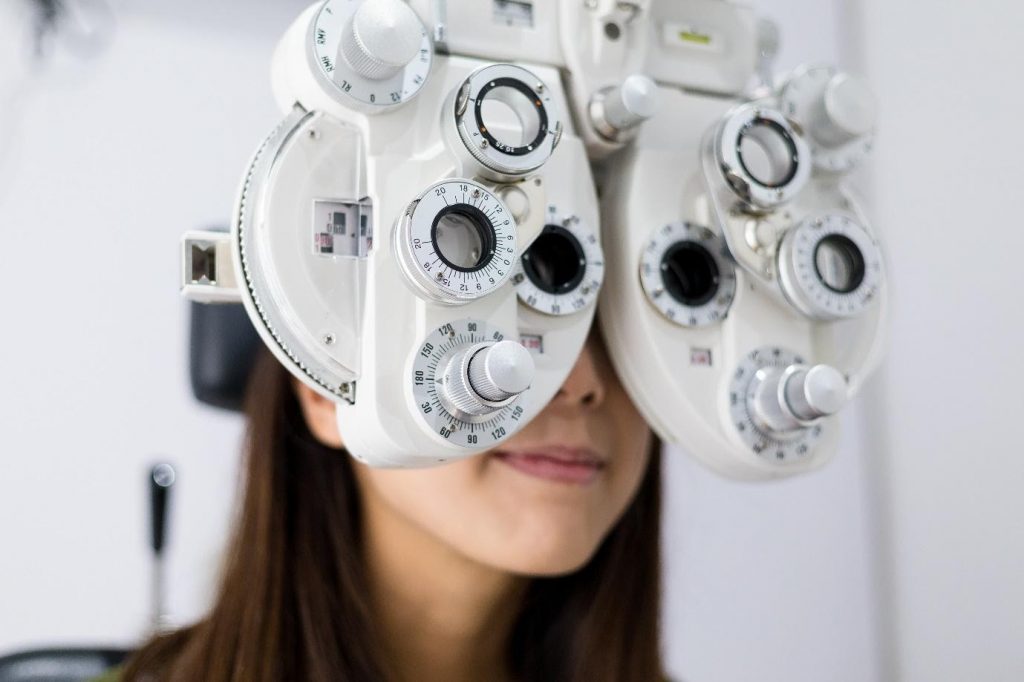Contact lenses are a kind of medical device that helps correct your vision problems. Thus, before you purchase the best contact lenses, you need a proper prescription from a qualified eye care specialist for the same. A contact lens prescription allows you to buy a particular type of contact lenses that are suitable as per your lens power requirements[1].
Although sometimes it can be really confusing to understand what the terms on your contact lens prescription mean. Well, it’s actually pretty simple once you know what each of the prescription terms suggests.
In case you have a specific eye condition such as astigmatism or require a pair of multifocal contact lens, your prescription will include all necessary details.
Take a look at a few questions that can help you understand your lens prescription better.
How to read your contact lens prescription?
It is essential to know that prescriptions for contact lenses and eyeglasses are not the same. Different test methods are used for each – a contact lens prescription and an eyeglass prescription. You cannot just simply convert one prescription to another.
Typically, most types of contact lenses prescription indicate the following measurements:
- Power
- Base curve
- Diameter
Lens prescriptions, for some individuals, also include the following:
- Cylinder
- Axis
Now, let us understand what each term indicates.
-
Contact Lens Power
The power of your contact lenses is usually measured in dioptres. This suggests the level of correction your contact lens must provide for your vision correction. With the correct lens power, you get the best possible vision, enabling you to see clearly.
- If there’s a minus sign (-) on your lens prescription, it indicates short-sightedness. This means you have myopia.
- If there’s a plus sign (+) on your lens prescription, it indicates long-sightedness. This means you have hyperopia.
- Contact Lens power is not the same as your glasses power all the times. For lower powers like less than +/- 4.00 D, the Contact lens power remains the same as your glasses powers. However, In minus powers beyond 3.75 D Contact lens power is slightly lesser than the glasses and in Plus power beyond 3.75, the contact lens power is slightly more than the glasses power. These adjustments in Contract lens power is made due to glasses being away from the eyes approx. 12 – 14 mm whereas the contact lenses are applied directly on the eye
Now, what does a Cylinder indicate on a contact lenses prescription?
If you have been prescribed toric contact lenses, then you will see a cylinder value on your lens prescription as it corrects astigmatism.
What does Axis indicate on a contact lens prescription?
Axis is usually stated in a lens prescription if you have astigmatism, and it is measured in degrees. The axis is required to compensate for the non-spherical shape of a cornea.
Additionally, the axis also indicates the location that the cylinder power should rest on.
What does Base Curve indicate on a contact lens prescription?
The base curve values mentioned on a lens prescription indicates the corneal curve. Measuring the base curve helps ensure that you get the best possible contact lens fitting for on eyes.
The base curve relates to the corneal curvature of your eyes, and it is measured in millimetres. The lower the base curve number, the steeper is your corneal curve.
What does ‘Diameter’ indicate on a contact lens prescription?
Diameter is used to state the measurement for different types of contact lenses from one edge to another. Commonly, it is measured in millimetres. Wearing contact lenses with the wrong diameter may give rise to eye irritations.
What does ‘Add’ indicate on a contact lens prescription?
The add value/power is generally written in dioptres and prescribed as a plus (+) power. The value states the magnifying power in multifocal or bifocal contact lenses for near work.
Apart from the terms mentioned above, you will also find information for the following on your lens prescription.
- Expiration date: Your eye care specialist decides the expiry date for your lens prescription. Past that date, you need to schedule an appointment to get a new lens prescription. Predominantly, such appointments are set on an annual basis.
- Corrective power: These numbers are associated with the actual power that is required for your contact lenses.
If you find the terms mentioned above on your lens prescription, then there’s no doubt that you are using a contact lens prescription. Both the terms Base Curve (BC) and Diameter (DIA) is used to ensure a proper lens fit on your cornea and the total eye surface. This handy guide on terms should help you decipher your lens prescription with ease.
Click here comments on Instagram Girl to get latest information and you can also visit this site Ytmp3 to know how to convert YouTube to mp3
Finding The Best Contact Lenses Provider
Once you understand how your lens prescription works, you can explore different types of contact lenses from reputable brands like Bausch+Lomb, which offers a wide variety of contact lenses for various eye conditions, including astigmatism and presbyopia.
As a recommendation, first, discuss with your eye care specialist about Bausch+Lomb products and find out which modality would suit your eyes the best before purchasing any types of contact lenses.
Bausch+Lomb provides a range of disposable contact lenses in variants of daily disposable contact lenses, monthly disposable contact lenses, and annually disposable contact lenses. Some of their most popular disposable contact lenses are Biotrue ONEday Daily Disposable contact lenses, iConnect Daily disposable contact lenses and Ultra Contact Lenses. All these types of contact lenses from Bausch+Lomb are available for a wide range of eye power.
Based on your eye care specialist’s recommendations, you can buy the best contact lenses from Bausch+Lomb and enjoy sharp and precise vision. Remember to follow all wear and care instructions thoroughly!
Read More About: 7starhd

